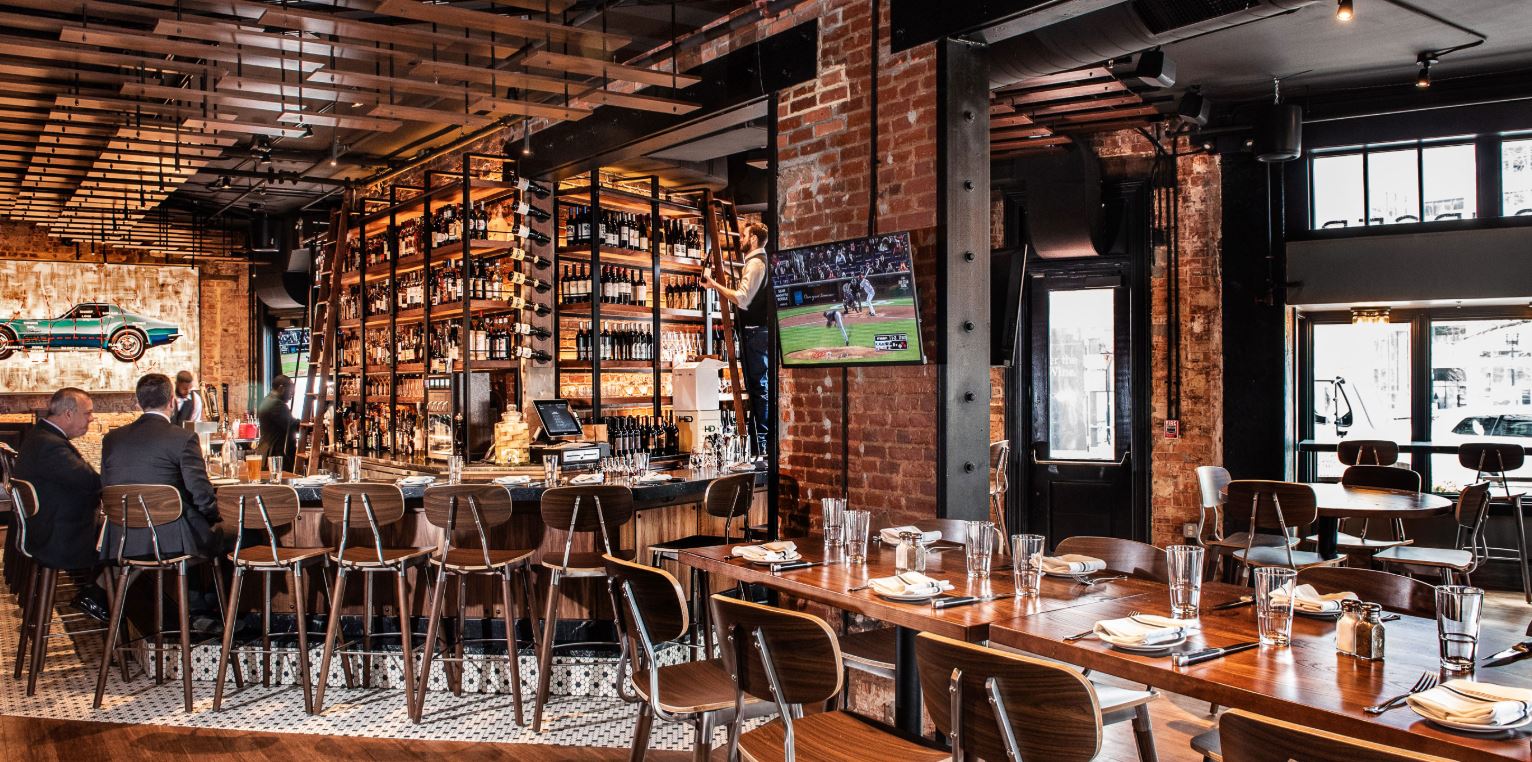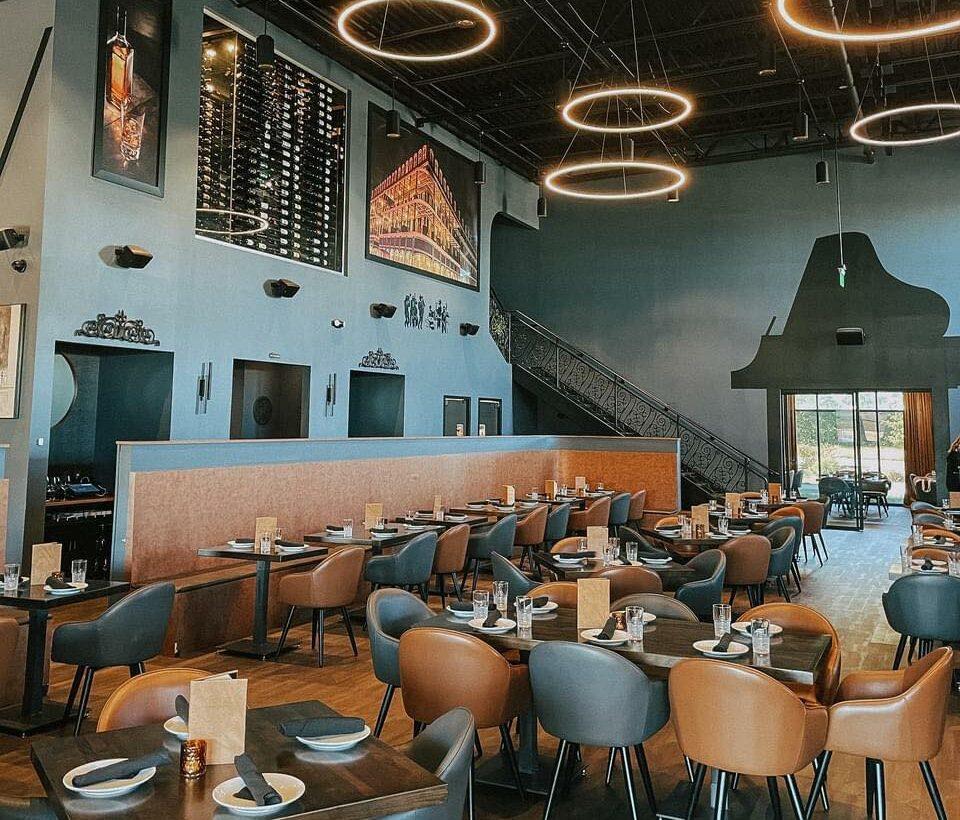Savor Genuine Eastern Cuisine With a Pan-Asian Twist for a Cooking Adventure
Getting started on a culinary journey with authentic Oriental food, boosted with a Pan-Asian twist, uses a distinct opportunity to check out the abundant tapestry of flavors that specify the area's varied culinary practices. This experience invites you to relish the elegant equilibrium of preferences-- sweet, salted, spicy, and sour-- integrated by fragrant herbs and flavors. Envision the cutting-edge fusion of Thai curry and ramen or the unexpected delight of sushi burritos. As you contemplate these tempting meals, consider the social stories and historic impacts that form them, each bite using a story waiting to be uncovered.

Discovering Pan-Asian Tastes
In the realm of global gastronomy, Pan-Asian food attracts attention for its amazing diversity and the harmonious interplay of tastes from various Asian cultures. This cooking technique commemorates the special ingredients and rich traditions discovered throughout the continent, producing a tapestry of preferences that is both gratifying and interesting. Trick to Pan-Asian cuisine is its ability to stabilize different tastes-- sweet, salted, spicy, and sour-- while highlighting the quality and high quality of each active ingredient.
From the umami-rich soy sauce of Japan to the fiery chili peppers of Thailand, Pan-Asian cuisine offers a comprehensive scheme of flavors. These aspects are often integrated in inventive methods, improving recipes with layers of intricacy. As an example, the usage of fragrant natural herbs such as lemongrass and cilantro, typical in Vietnamese and Thai cuisine, includes a revitalizing illumination to recipes, while the consolidation of coconut milk delivers a creamy, abundant appearance.
The emphasis on fresh fruit and vegetables and fragrant seasonings makes sure that each dish is not only a feast for the taste buds however additionally for the detects. Pan-Asian cuisine welcomes diners to start a cooking trip, exploring the substantial and differed landscapes of Asian gastronomy with every bite.
Blend Dishes to Attempt
While Pan-Asian cuisine is celebrated for its standard tastes, the modern-day cooking landscape is increasingly welcoming fusion meals that mix these timeless components with impacts from various other areas. This innovative technique not just honors the rich heritage of Oriental cooking arts however additionally introduces novel taste experiences that attract contemporary palates.
An archetype of such a fusion recipe is the Korean-Mexican taco, where seasoned bulgogi beef is wrapped in a cozy tortilla, covered with kimchi and a hot gochujang-infused salsa. This mix marries the bold, savory tastes of Korea with the dynamic, fresh components of Mexican food. Similarly, sushi burritos have actually obtained appeal, joining together the fragile creativity of Japanese sushi with the hearty, hand-held benefit of a burrito, often featuring combination components like tempura shrimp and avocado with a drizzle of wasabi mayo.
One more significant recipe is Thai curry ramen, which infuses the luscious, aromatic spices of Thai curry into the calming broth of conventional Japanese ramen, producing an unified mix that entices the senses. These combination dishes extend beyond simple novelty; they stand for a culinary discussion in between societies, motivating expedition and development worldwide of Pan-Asian cuisine.
Vital Active Ingredients and Seasonings
To absolutely appreciate Pan-Asian food, one should recognize the vital components and flavors that form its foundation. This diverse culinary style draws from a rich tapestry of Asian customs, using a harmonious mix of tastes and appearances. Key components include soy sauce, fish sauce, and oyster sauce, which give a tasty umami depth necessary to Oriental dishes. Corresponding to these are rice vinegar and mirin, lending a fragile level of acidity and sweetness.
Aromatic elements are pivotal, with ginger, lemongrass, and garlic being common throughout numerous Pan-Asian recipes. These components give a fragrant base that improves the complexity of tastes. Spices such as celebrity anise, cardamom, and cinnamon present warmth and personality, resembling influences from areas like China and India.

Cooking Techniques and Tips
Grasping the art of Pan-Asian cuisine calls for familiarity with its distinctive food preparation methods, each adding to the lively tapestry of tastes this culinary tradition is commemorated for. Central to these methods is the stir-fry, a rapid cooking method that maintains the nutritional honesty and dazzling colors of ingredients. Utilizing a wok, the stir-fry method permits also warm circulation, important for accomplishing the particular appearance and flavor equilibrium of Pan-Asian meals.
Another basic strategy is steaming, click here to read especially common in Chinese cuisine. This gentle approach preserves the all-natural flavors and nutrients of active ingredients, making it excellent for seafood and veggies. Dumplings, a cherished staple, commonly benefit from steaming, resulting in soft, delicious structures.
Barbecuing, additionally indispensable, gives smoky midsts to recipes such as Korean bulgogi or Japanese yakitori (Chinese food Islamabad). This technique usually includes marinating components, enabling flavors to penetrate deeply prior to cooking over an open flame or warm plate
Lastly, mastering the art of stabilizing tastes-- sweet, sour, salted, bitter, and umami-- is important. Correctly layering these components can boost a meal from common to amazing, using a complicated and pleasing cooking experience that embodies the significance of Pan-Asian cuisine.
Eating Experiences Worldwide
Across the world, Pan-Asian cuisine supplies an exceptional eating experience, celebrated for its abundant tapestry of tastes and vivid presentations. This culinary sensation has actually transcended social borders, capturing the hearts and tastes buds of food fanatics worldwide. In worldwide cities fresh York, London, and Sydney, Pan-Asian restaurants act as melting pots where cooking practices from Thailand, Japan, China, and beyond assemble, supplying restaurants with a diverse mix of recipes that highlight the region's diversity.
The worldwide allure of Pan-Asian food depends on its ability to provide both credibility and innovation. Cooks masterfully marry typical active ingredients such as lemongrass, soy sauce, and miso with modern strategies, resulting in meals that are both acquainted and refreshingly new. This blend allows diners to start a culinary journey that respects heritage while welcoming modernity.
Furthermore, eating experiences are raised with attentively designed atmospheres that show the values of Pan-Asian aesthetic appeals. From minimal Japanese-inspired interiors to lively Thai-themed rooms, each restaurant provides an one-of-a-kind ambiance that complements the culinary offerings. Because of this, customers are not just consuming a meal however partaking in a cultural experience, making Pan-Asian dining a really international phenomenon.
Conclusion
The exploration of Pan-Asian food offers an extensive understanding of the intricate interaction of tastes and cooking practices across Asia. By embracing combination dishes such as Thai curry ramen and sushi burritos, the cooking trip not only highlights the versatility of traditional components however also showcases cutting-edge modern-day strategies. This gastronomic journey, enriched by vital seasonings and cooking methods, supplies a distinct chance to appreciate the multiculturalism and cooking virtuosity that specify Pan-Asian cuisine on a global scale.
Getting started on a culinary trip via genuine Eastern cuisine, enhanced with a Pan-Asian twist, offers an one-of-a-kind chance to explore the rich navigate here tapestry of tastes that specify the area's diverse cooking customs.In the realm of international gastronomy, Pan-Asian food stands out for its amazing diversity and the unified interaction of tastes from numerous Eastern cultures. Secret to Pan-Asian food is its ability to Get the facts stabilize different flavors-- sweet, salted, spicy, and sour-- while highlighting the quality and quality of each ingredient.
